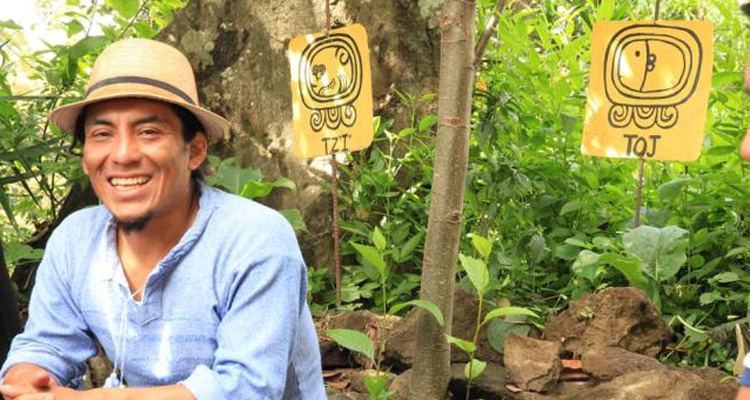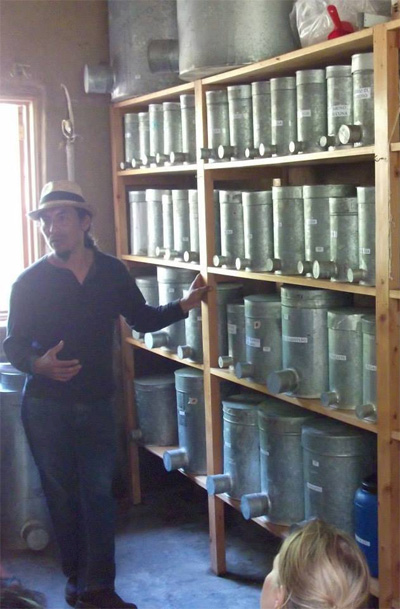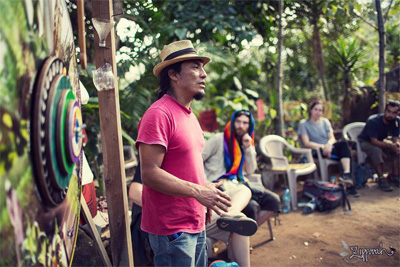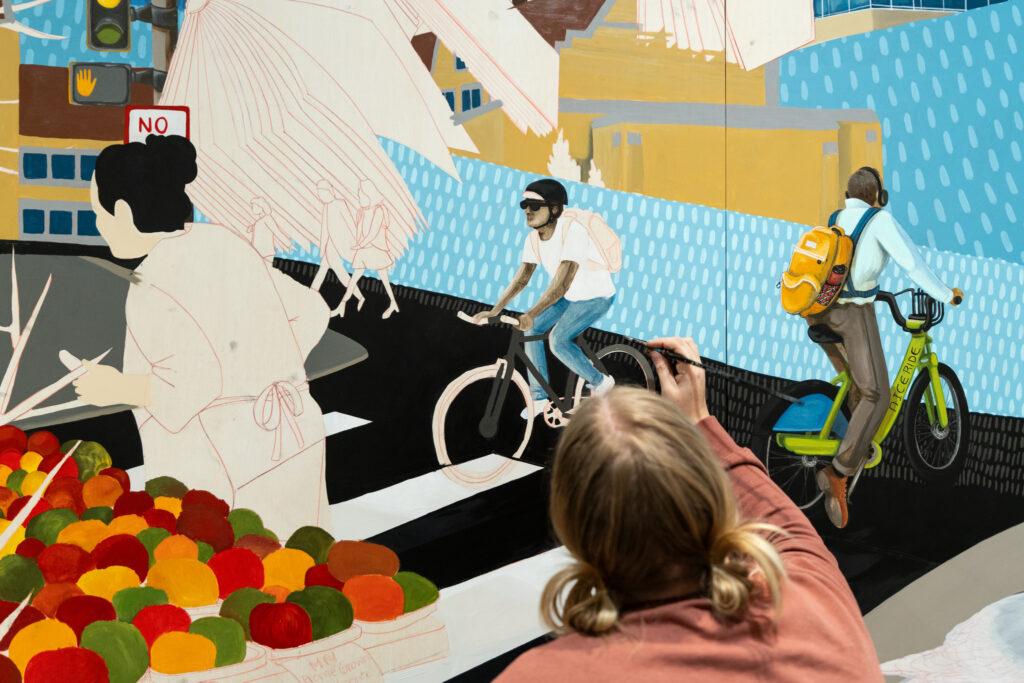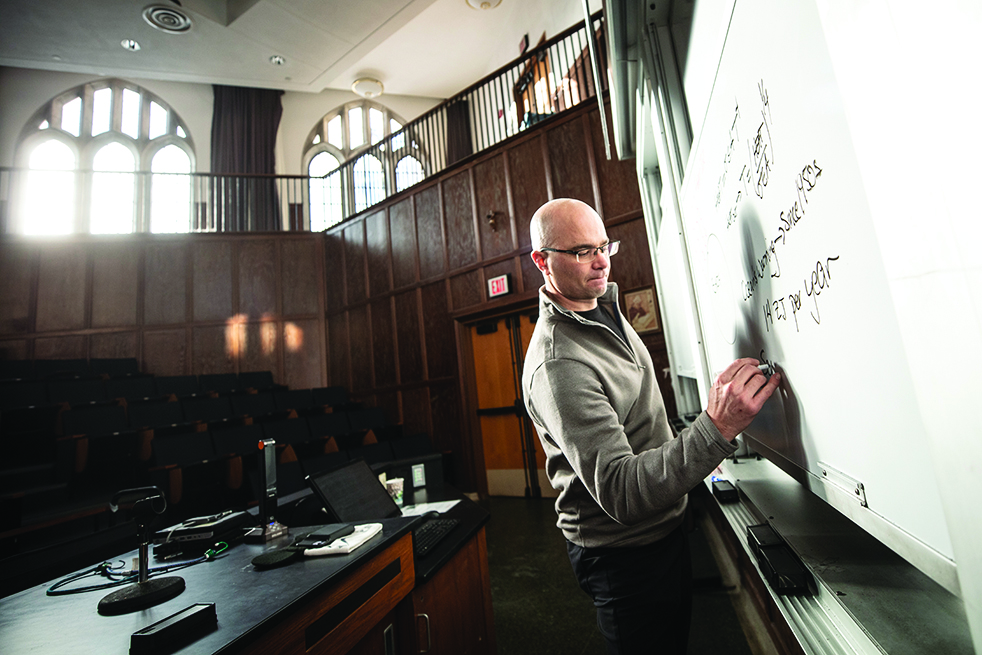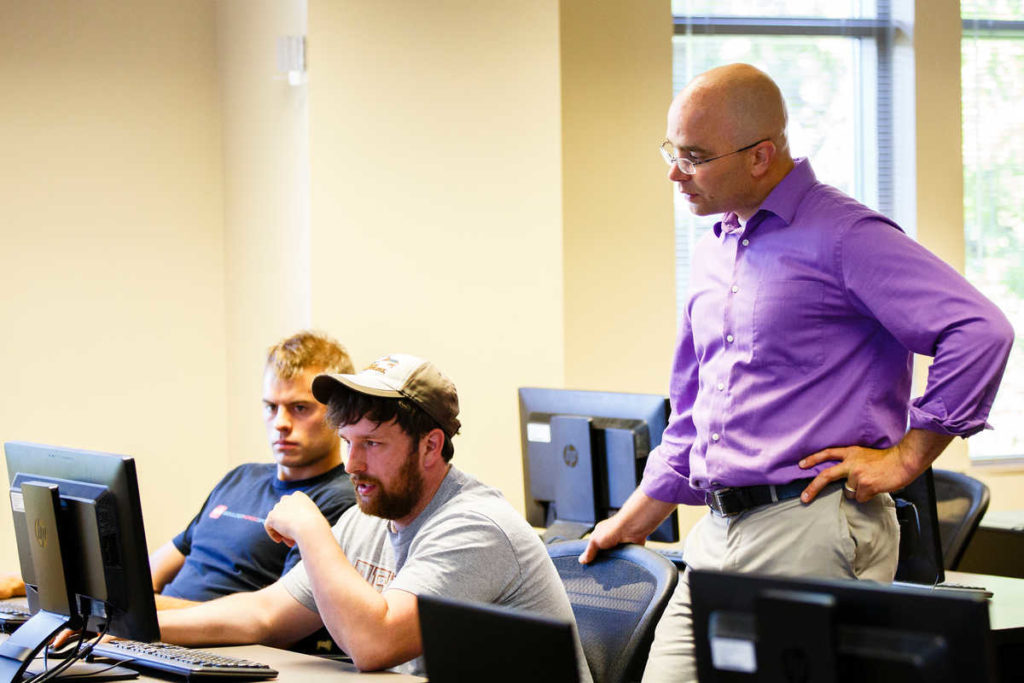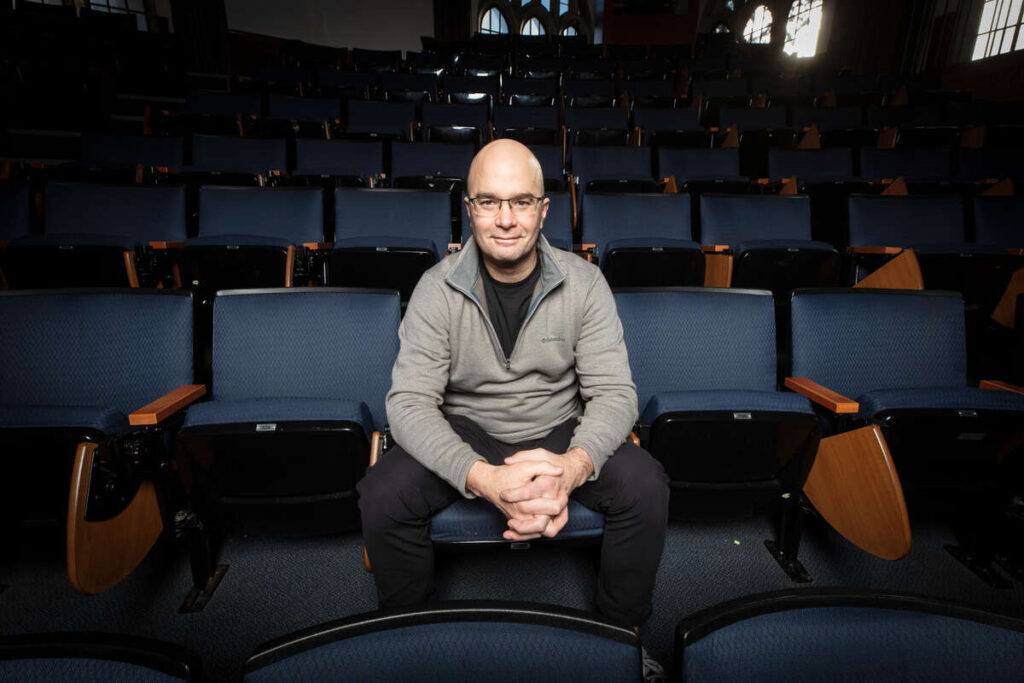In the small Guatemalan town of San Lucas Toliman, among a lush patchwork of banana plants and avocado trees where roosters and ducks roam tunefully, Ronaldo "Rony" Lec Ajcot '94 runs IMAP, the Institute of Mesoamerican Permaculture. The 15-year-old organization, which Lec founded, is making a meaningful impact in the Mesoamerican region by improving food security and, in turn, preserving ancestral Mayan farming practices.
Permaculture: The heart of IMAP
At the heart of IMAP is permaculture, a system of agricultural and social design principles aimed at simulating or directly mimicking the patterns and features found in natural ecosystems.
“Working with the land is the only way to preserve our Mayan cultural heritage and our survival,” said Lec, who is Kakchiquel, a Mayan subgroup indigenous to the midwestern highlands of Guatemala.
He explained that because Mayan culture is land based, “what happens in agriculture affects the culture and vice versa.” Likewise, the area on which IMAP focuses extends far beyond his home country. “Guatemala is just a political boundary. The Mayan culture extends throughout a very large area – southern Mexico, Belize, Guatemala, El Salvador and Honduras. Others might also consider northern Nicaragua and northern Costa Rica. That region is our land, our culture,” he said.
On site there is a school in which Lec, with his team of six locals and a revolving door of international volunteers, promotes permaculture through workshops, courses and educational tours. Its mission is to empower communities throughout Mesoamerica via “self-sustainability through permaculture education, Mayan ancestral knowledge and conservation of native seeds.”
IMAP's seed bank plays a central role in its mission to promote permaculture. Lec and his team keep more than 200 species of plants, mainly medicinals and edibles native to the area such as chia, chiles, tomatoes, beans, squash, and corn, “the gift of Mayans to the world,” according to Lec. There also is wild amaranth, sometimes called pigweed, which is edible despite being labeled a weed in the United States.
The native seeds are traded, sold, lent to and exchanged with regional subsistence farmers. "We don't give them away because we also want to give a monetary value to these seeds," he said.
Mesoamerican subsistence farmers, IMAP’s target audience, are the primary draw for the workshops, though anyone is welcome, and a number of St. Thomas students studying abroad over J-Term and spring Vision trips have taken tours throughout the years.
Roots of IMAP
Anxious to give back to his community, Lec returned to Guatemala in 1994 immediately after graduating from St. Thomas. A few years would pass before he would find his vocation.
His first job as a researcher for the Forensic Anthropology Foundation, documenting the massacres in one Guatemalan community during the 1980s, seemed a perfect fit; however, in short time the work proved too overwhelming for his spirit, so he searched for another way to contribute to his community.
The grandson of subsistence farmers who “nourished me with Mayan culture,” Lec quickly discovered that “everything pointed to agriculture.”
“There was an urgent need because it was obvious farmers were adopting modern ways. We needed a sustainable alternative,” he said.
By modern ways, Lec referred to “the big production model.” That model, characteristic to large-scale production, relies on chemical fertilizers, insecticides and pesticides to propagate the monocultures – the production of only one crop in a field year after year and the antithesis of permaculture. It also relies on exporting, which is contrary to Mayan farming which revolves around self-sustaining production. Excess produce, if there is any, is sold to the local market.
“The classical Mayans we’ve all heard of … they built huge cities, temples, calendars. An amazing culture. I thought, ‘How can we go back and figure out what they did?' I wanted to rescue that ancestral knowledge," he said.
Lec often refers to crops as “systems” or “food forests,” a sign of the interdependent nature of the crops grown in the region. “The majority of land here is dedicated to coffee production. In my grandfather’s system, we had citrus trees, banana trees provide shade for the coffee. But in the modern (monoculture-based) agricultural model, which produces larger crops for export, there is no shade, it’s just coffee. So the plants have to work harder to survive. They need chemicals to help them meet their photosynthesis requirements that shade would’ve provided them,” he said. “In nature there is no monoculture.”
The process of finding that alternative involved a steep learning curve, copious hands-on research and global travel. Lec poured himself into research on alternative agricultural practices and ancient Mayan traditions. Chinampas – often called floating islands – stood out as a first project to undertake. Lec and a cooperative of subsistence farmers called Ijat'z (which means "seeds" in Kaqchikel) with whom he had been working were able to reclaim a large swathe of flood-prone land along Lake Atitlan in San Lucas Toliman. There, they endeavored to hand-build the narrow grid of canals the system is known for.
Although their first attempt failed, Lec learned an important lesson that foreshadowed his introduction to permaculture. On a trip to the Permacultura America Latina (PAL) in Santa Fe, New Mexico, he learned that the linear, angular canals they constructed were unlike anything found in nature. An expert there told him the trick was to work with nature, not against it.
Soon after, Lec traveled to Tasmania, Australia, to visit Bill Mollison, who is widely considered the father of permaculture and took courses on permaculture through PAL in Guatemala.
"Permaculture resonated with what I was doing because it's based in ancestral knowledge from all over the world. Their first work was to research all the ways people made housing, clothing, medicine, not just agriculture. It's biodynamic."
War, family influence
For Lec, social leadership runs in the family. Throughout (and after) the 1970s his father and grandfather, a subsistence farmer, were involved with social programs run under the auspices of the Diocese of New Ulm (Minnesota) to “acquire land for the landless” in Guatemala, Lec said. He noted that with 80 percent of the fertile land in the hands of 3 percent of the population it was a contentious imbalance: “Without land we can’t build or farm, we can’t exercise our culture.”
Meanwhile, the Guatemalan Civil War, which erupted in 1960 (and wouldn’t officially end until 1996), continued throughout the country. His father was killed in 1981 when Lec was a child, a victim of one of the many counterinsurgency campaigns backed by the then-autocratic Guatemalan government.
“During that period,” Lec explained, “many people were persecuted even though they weren’t involved in the arms conflict. The government basically considered everyone involved in a social program to be an adversary or guerrilla. That included church leaders and cooperative leaders. Some people think of that time as a genocide.” (More than 80 percent of the 200,000 killed over the 36-year war were indigenous Mayans).
In 1988, with help from Diocese of New Ulm, Lec's family sough sanctuary in Minnesota. His mother, who worked with the New Ulm priest, Father Gregory Scheaffer, to rescue orphans of the civil war, had received death threats.
Lec attended high school in New Ulm to learn English, graduating in 1990. By then, he said, the cold had “beat” his family, and they returned to Guatemala as the war showed signs of winding down. Lec, wanting to pursue a college education, chose to remain in Minnesota. Scheaffer helped secure him a full scholarship to attend St. Thomas, where he earned a B.A. in anthropology with a minor in justice and peace studies.
“My idea was to apply my anthropology studies and give back to my country and community,” he said. “It was an amazing experience, where I learned so much of the world through other people.”
***
With implementation of free-trade agreements looming, Lec believes IMAP will be needed more than ever. "They state that a country can only produce 10 percent of its seed requirement to be considered fair for competition," he said. "Once that happens farmers will be prohibited from producing their own seeds."
But there is a silver lining. With IMAP in its 15th year Lec is heartened to see people throughout the Mesoamerican region adopting permaculture and passing their knowledge on to others.
He recently learned of a young farmer who took classes at IMAP and is coordinating a seed bank in northwest Guatemala.
"He told us his seed bank is bigger and better! That's great. It's a big deal for us. That's what we want!" he said.
